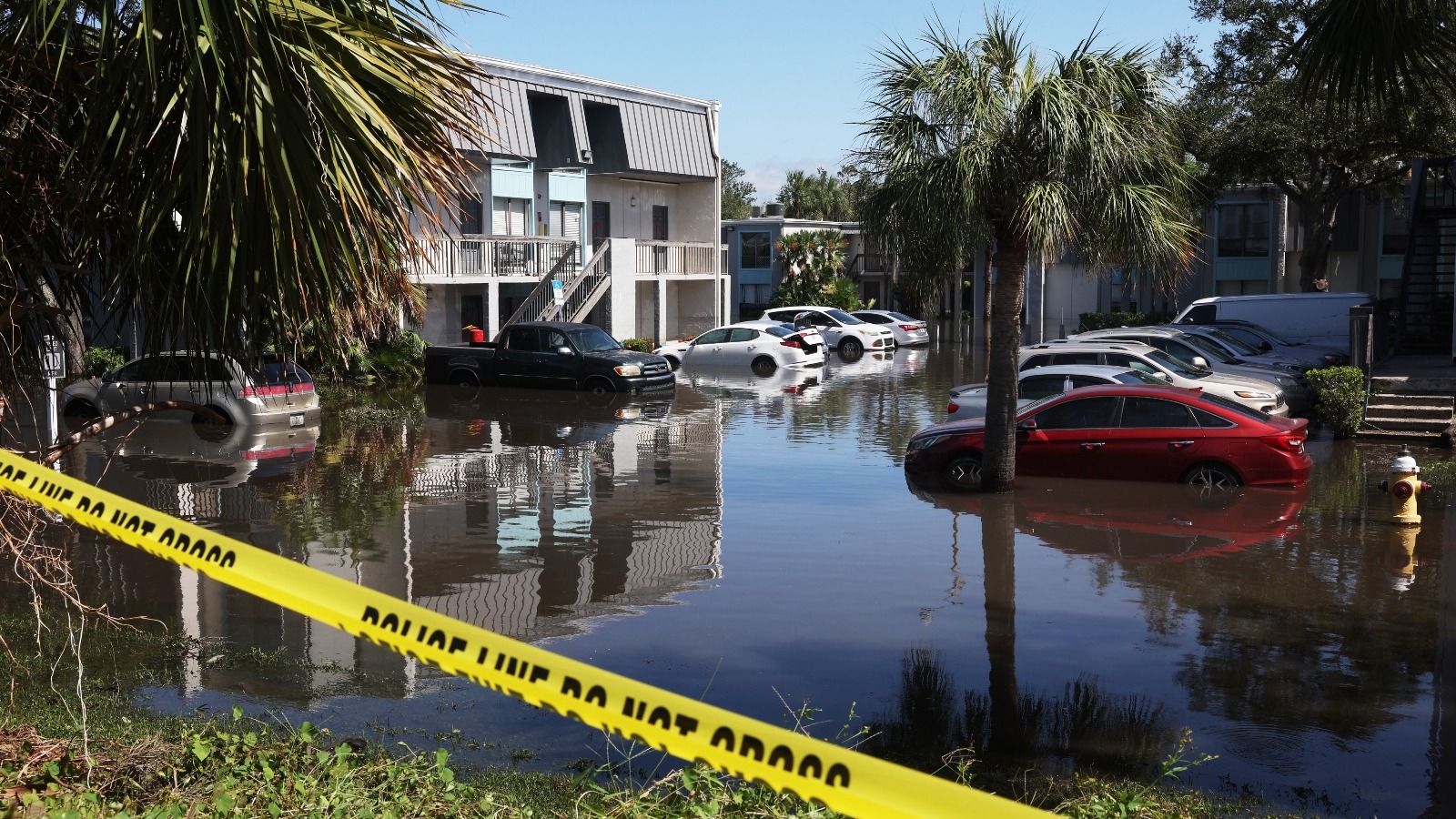As climate change accelerates, hurricanes, wildfires and hail storms pound the U.S. with growing vigor—and the insurance market is struggling to foot the bill of the damages they leave behind for customers.
In 2023 alone, extreme weather cost the U.S. more than $92 billion. And it’s not just home insurance providers that are hiking rates.
Now, car insurance quotes are reflecting trends seen across the home insurance market as climate change becomes an increasingly prevalent — and costly — factor.
This could spell trouble for car owners, experts say. Vehicles are a key means of escape during a climate-driven disaster, but they can also fall victim to floods and fires just as homes do.
Primary and secondary perils
When Hurricane Helene whipped through the southern U.S. in early October, cars floated down streets like boats as flood waters submerged entire neighborhoods. Other vehicles were pulverized by felled trees or flying debris.
Most car insurance plans cover flooding and these external damages to help people recoup some of their losses. The Palm Beach Post reports that since Hurricanes Helene and Milton, Floridians have filed more than 90,000 auto insurance claims.
The bad news is that increasing hurricane intensity is pushing insurance companies to raise rates to account for future payouts. And it’s not just megastorms that have the auto insurance market on edge, according to Andrew Hoffman, a professor of sustainable enterprise at the University of Michigan.
“We can talk about the big storms like Helene and Milton, but it’s actually the secondary perils that are causing more payouts. And that’s heavy rain storms [and] flash flooding that comes with that,” Hoffman told me. Other such perils can include hailstorms, droughts, and wildfires — all fueled by climate change.
“It’s actually secondary perils that are really having a dominant influence on driving up insurance costs,” he added.
An August report found that the average U.S. auto insurance policy could spike by 22 percent by the end of this year. That’s due to a number of factors, including inflation, extreme weather, and more cases of severe accidents or dangerous driving. The report finds that rates in California, Missouri, and Minnesota could go up by as much as 50 percent, and that “damage from severe storms and wildfires contributes to rising rates in the states.”
In 2023, insurance company Allstate threatened to stop renewing auto policies in several states until governments agreed to higher rates, The Wall Street Journal reports. The problem is much worse on the home insurance market. In March, my colleague Amy Green wrote about homeowners grappling with astronomical home insurance premiums in Florida, where climate shocks are upending the state’s entire real estate market. Florida now has the third-highest car insurance rates in the country as well.
“A lot of the things that apply to the weather effects on home insurance also apply to the car that’s sitting in your driveway,” Hoffman said.
Worldwide, only some of the cost of natural catastrophes is covered by insurance companies: Last year, insurers and reinsurers paid $95 billion of the $250 billion in economic losses, according to Munich Re.
Rippling market effects
After the recent back-to-back hurricanes, rental car agencies were inundated with customers waiting for repairs on their own vehicles. Those with totalled cars turned to local dealerships to find a new ride — but some of these businesses couldn’t dodge the storms’ paths of destruction, either. For example, one dealership in New Port Richey, Florida, lost an estimated 672 vehicles during Hurricane Helene. Though the business’ cars were insured and the manufacturer sent new ones to meet demand, the dealership’s owner said he will have to pay roughly $3.5 million to cover deductibles.
Demand and prices for new and used cars often surge after hurricanes. So does the risk for scams, experts say. A recent report from auto data company Carfax estimates that as many as 138,000 vehicles experienced flood damage across six states during and after Hurricane Helene. The company warned that thousands of these vehicles will likely be bought and cleaned up by fraudulent salespeople, who target customers unaware of the lingering internal damage, the company says. Similar scams occurred in the aftermath of Hurricane Katrina in 2005.
“After cleaning up the cars and moving them across the country, these scammers will try to lure unsuspecting buyers into thinking they’re getting a great deal,” Faisal Hasan, the vice president for data at Carfax, said in a statement. “These cars may look showroom fresh, but they’re literally rotting from the inside out.”
Last week, Illinois Attorney General Kwame Raoul issued a warning for consumers that these flood-damaged vehicles could soon enter the state’s used car market because they are “often shipped to places hundreds of miles from areas hit by storms.”
Source link
Kiley Price, Inside Climate News grist.org

